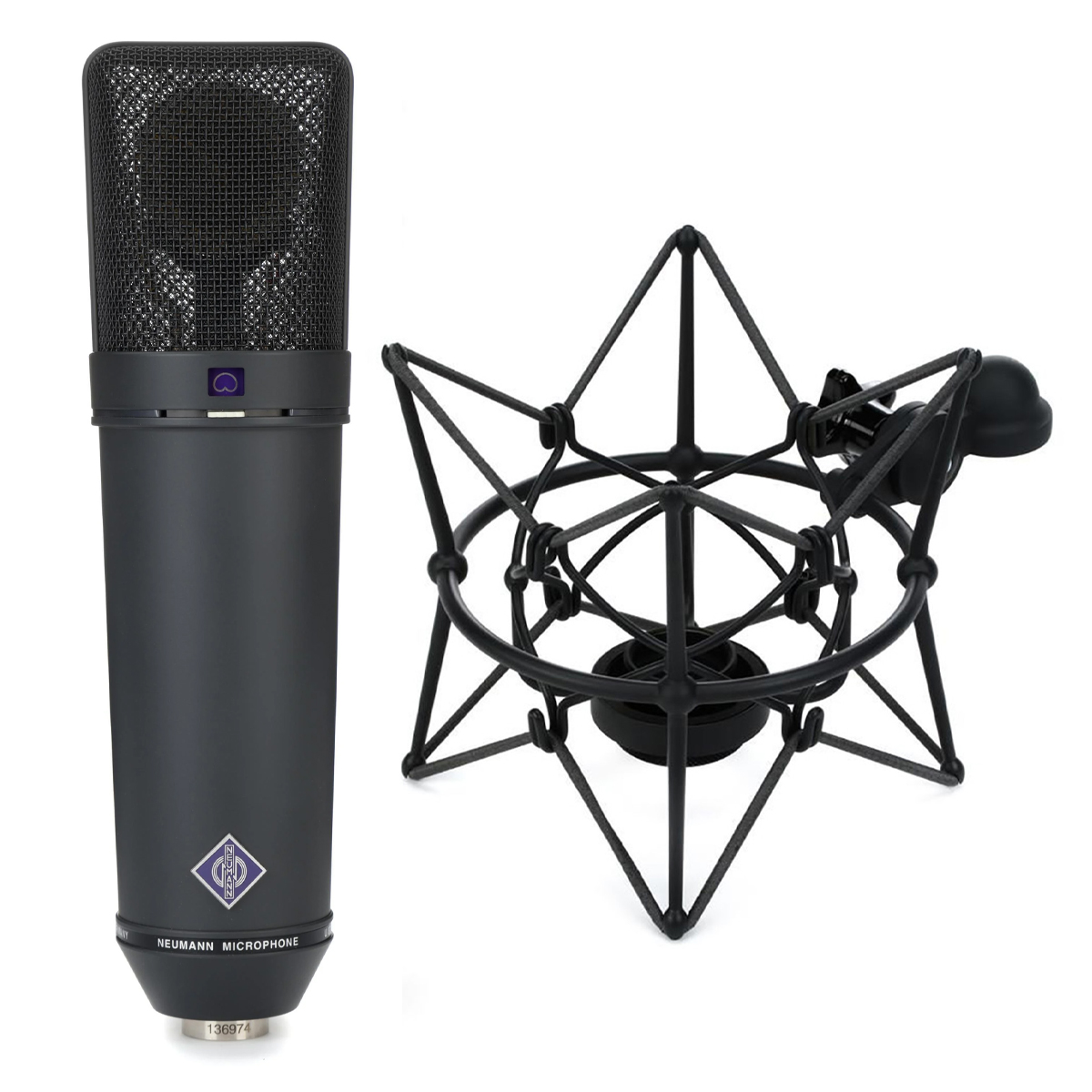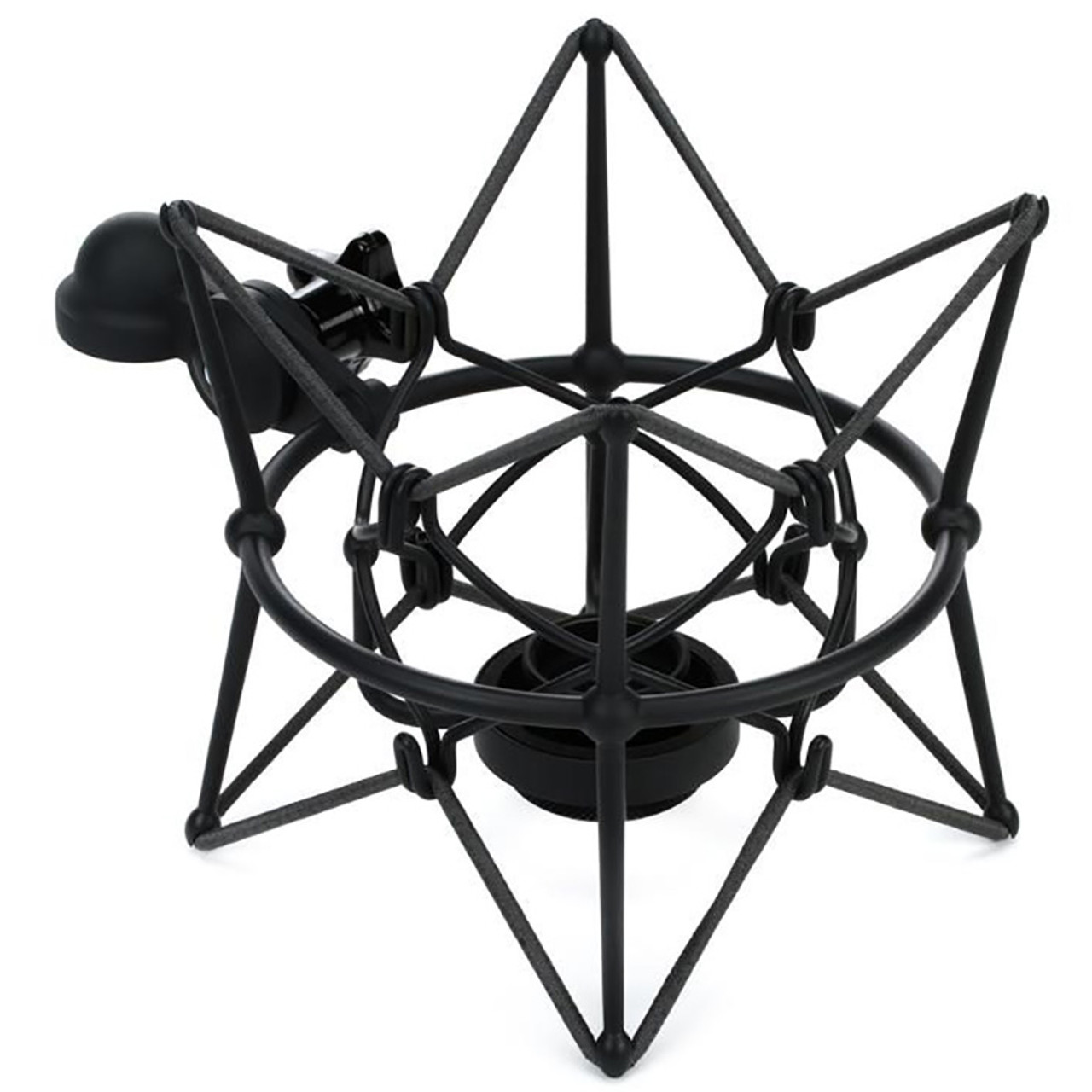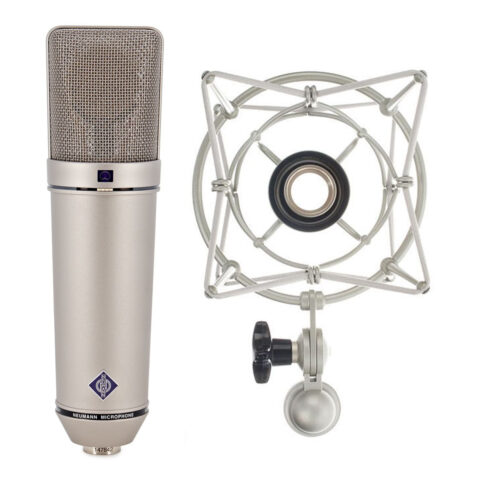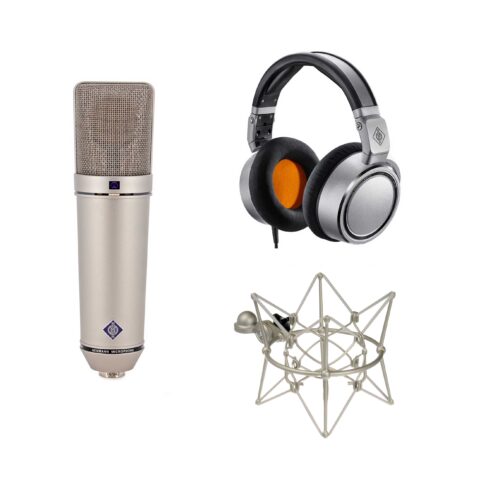Neumann U 87 Ai MT – Neumann EA87 Bundle
The Neumann U87Ai is possibly the most famous and widely used vocal mic in the world, and for good reason. Not merely does it deliver a solid, well-defined (accurate?) sound with an enhanced lower mid (perfect for many voices) but the U87Ai inspires confidence in vocalists, who feel comfortable performing in front of a microphone they know, either from past use or from the countless photos and videos they’ve seen.
And this makes it the number one choice for any commercial facility. Irrespective of application, visiting engineers, artists and producers will always be happy if a Neumann U87Ai is on hand for vocals. Indeed, I often say it’s everyone’s second favourite vocal mic – everyone has their own first choice, but if that’s not available for a session, nine out of ten cats will happily settle for the Neumann U87Ai.
When Neumann first introduced the U67, they could have had little idea that its successor (the solid state Neumann U87) would go on to dominate the world of vocal recording in studios worldwide. Why has it been so succesful? Quite simply, it delivers consistent results session after session after session.
I often say that the Neumann U87Ai is everyone’s second favourite mic. In that we all have a different first favourite, the Neumann is a sure bet to put a smile onto any engineer’s face. For this reason, it is an absolute essential for any commercial studio or studio with commercial pretensions. Sure, you may personally prefer a Brauner, a Geffell, a Milab (thank you, fans…) or even a 1950’s RCA or Reslo, but when the client walks through the door, his engineer will automatically reach for the U87 unless he’s bought his own vocal mic.
I often get customers calling who are dissapointed with the results they’re getting from their 87. When I ask whether they’re using the mic in cardioid or omni, they invariably say…’Cardioid, of course. I’m only singing into one side…’ ‘Ah…’ me says, ‘Next session, bang it onto omni.’ They do and nine times out of eleven call me back to say how much better the sound is.
I learnt the hard way (by being embarrassed in front of a much better engineer). You see, multipattern mics put both diaphragms out of phase to achieve a single sided (cardioid) pattern, and this thins out the bottom end and lower mics, giving a flat, brittle sound. The main reason you should run a multpattern mic in cardioid is if you have crosstalk or bleed problems but for the best, full bodied sound, always use the omni position. Suddenly the mic comes alive and you realise…That’s why the U87 has become an industry standard.
THE GOLD STANDARD
The Neumann U 87 Ai is probably the best-known and most frequently used studio microphone the world over. Its smooth and refined sound is as iconic as its elegant exterior design. The U 87 Ai is the standard microphone for speech and vocals. Three polar patterns plus pad and low cut options make it adaptable to a wide range of applications.
OMNIPRESENT YET UNIQUE
The Neumann U 87 Ai is a true legend. Introduced in 1967, it has shaped the sound of countless hit records for the past 50 years. And when those hits were announced on the radio, many a DJ sat before a U 87 Ai. The legend continues: To this day, no professional recording studio is complete without a Neumann U 87 Ai.
The U 87 Ai is the epitome of a large diaphragm condenser microphone. Its tapered body and iconic headgrille design have become part of the collective consciousness: This is what a studio microphone looks like. The same is true of its sound: The U 87 Ai represents studio quality; it has become the gold standard by which other microphones are measured.
What sets the U 87 Ai apart is its unique combination of linearity and character. Although its on-axis frequency response is remarkably flat, it does exert certain charisma. It just sounds right! This makes the U 87 Ai both versatile and instantly recognizable.
CLASSIC NEUMANN ENGINEERING
Technically speaking, the U 87 Ai is a traditional design whose timeless formula has remained unchanged for decades. The U 87 Ai uses the same dual diaphragm condenser capsule design as its predecessor, the no less legendary U 67 of the early 1960s. Its head amplifier, too, is based on the same design principles as its tube driven predecessor, but the U 87 Ai realizes them by means of a unique FET circuit with a minimal signal path and a transformer balanced output, ensuring maximum signal integrity and high common mode rejection.
The result is a studio microphone of unmatched clarity. Its natural sound and unique midrange presence make the U 87 Ai the ultimate vocal microphone, praised by singers and engineers alike, as well the prime choice for speech applications, such as voice over, dubbing, and audio books. Due to its balanced response in each of its three directional patterns, the U 87 Ai is also a versatile microphone for anything from acoustic guitar to drums overheads. Due to its solid bass response and excellent midrange detail, it is often seen in front of bass and guitar cabinets. For classical recordings, the U 87 Ai is frequently used as a spot mic for soloists, e.g. cello. A stereo pair of U 87 Ais is the preferred choice of many engineers for recording piano in virtually any genre from pop and jazz to classical music.
- The world’s most famous studio microphone
- Classic sound, instantly recognizable yet versatile
- Balanced frequency response
- Three polar patterns: omni, cardioid, figure-8
- Switchable low cut and pad
- Very low self-noise
Specifications
- Acoustical operating principle : Pressure gradient transducer
- Directional pattern : Omnidirectional, cardioid, figure-8 plus
- Frequency range : 20 Hz … 20 kHz
- Sensitivity at 1 kHz into 1 kohm : 20/28/22 mV/Pa*
- Rated impedance : 200 ohms
- Rated load impedancen : 1000 ohms
- Equivalent SPL CCIR 468-3 : 26/23/25 dB*
- Equivalent SPL DIN/IEC 651 : 15/12/14 dB-A*
- S/N ratio CCIR 468-3 : 68/71/69 dB*
- S/N ratio DIN/IEC 651 : 79/82/80 dB*
- Maximum SPL for THD 0.5% : 117 dB (cardioid)
- Maximum SPL for THD 0.5% with preattenuation : 127 dB
- Maximum output voltage : 390 mV
- Dynamic range of the microphone amplifier cardioid DIN/IEC 651 : 105 dB
- Supply voltage : 48 V ± 4 V
- Current consumption : 0.8 mA
- Matching connectors : XLR 3F
- Weight : 500 g
- Diameter : 56 mm
- Length : 200 mm




